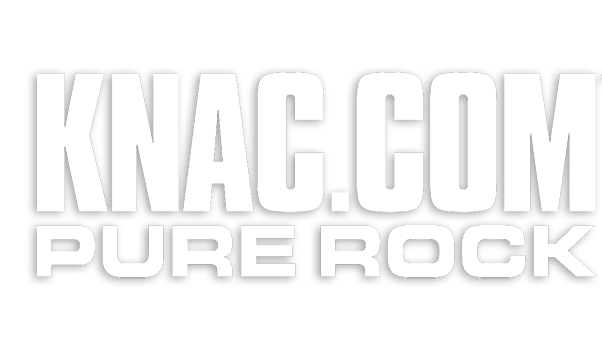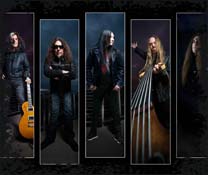Starting out in 1991 as an alternative-rock band from Maryland, Clutch gained a loyal following the old-school way — paying their dues through steady touring. As the years progressed and trends changed, they gradually changed course and successfully transformed into an exceptional blues-rock band. Clutch recently released its most acclaimed album to date, From Beale Street To Oblivion. Once the powerful first single, “Electric Worry,” graced the airwaves, listeners’ ears instantly perked up. The tune is now a favorite on KNAC.COM, and has won over a bevy of new fans for Clutch.
Clutch guitarist Tim Sult checked in with KNAC.COM shortly before sound check in Stockholm, Sweden, while the group was on the final leg of its UK and European tour. For Clutch, this was the first time working the circuit as a headlining act. After returning to the US, Clutch will embark on another round of headlining shows to play cities they hadn’t hit on the first excursion.
Sult filled us in on what’s been happening during this tour and how things have changed since Clutch emerged. Furthermore, we got the lowdown on the band’s creative process for writing and recording Beale Street under the guidance of producer Joe Barresi.
KNAC.COM: How have things been going on this tour? You had just completed the first leg of your US tour before heading over to the UK and Europe. What have been some of the highlights on this trek?
SULT: It’s been great! The US shows went really well and it’s probably been our best UK and European tour ever. It seems like we’re playing to a lot of new people on this tour. There seem to be a lot of new Clutch fans out there. So that’s been my personal highlight — playing for so many new people.
KNAC.COM: In what ways do the audiences differ around the world?
SULT: Probably in how tight their pants are! That’s really the main difference I can see. There are a lot of tight pants in Italy, and mostly on men. It’s terrifying! But that’s Europe for you. Then again, you’ll see some ridiculously tight pants in certain places around the US as well… just not on anyone in this band.
KNAC.COM: Describe your influences as a guitarist.
SULT: I guess that early on, when I started, I was into Jimmy Page, Ritchie Blackmore, and basic classic rock-style stuff. I was also into Randy Rhoads, and totally into Queen.
KNAC.COM: Do the other band members share similar influences?
SULT: We all pretty much listen to the same kinds of music. When we first started, we were definitely more into the Helmet-ish, Melvins and early ’90s heavy rock, but not into metal type stuff that was going on at that time. But since then, we’ve morphed into more of a classic rock sort of band. I would say that our style now is more blues-oriented and less hardcore.
KNAC.COM: How did the songs come together for this album?
SULT: They all came together pretty quickly while we were working in our rehearsal space back in Frederick, Maryland.
KNAC.COM: What is the typical songwriting process for Clutch?
SULT: We usually just all get together in a room and start laying down some riffs, then we end up having about three decent ideas a day. Sometimes, maybe one out of ten ideas turns into a song. If [singer] Neil [Fallon] hears something that he can put some vocals on, that usually will turn into a song. The lyrics usually do come last, but it could be either way. A song could start from us all jamming together, or it could be someone coming in with a riff, or it could just be from ripping off a riff from somebody else and playing it slightly different. It could be anything. There really are no set rules to how we come up with the songs. We just go with whatever works.
KNAC.COM: Had you made demos of the material first before heading into the studio to record the tracks for this album?
SULT: We did some demos in our rehearsal space and in our drummer J.P. Gaster’s studio. We probably did about six or seven of the songs in demo form before we recorded them.
KNAC.COM: Did you have more material written and recorded that didn’t end up being used on the album?
SULT: We had written about three or four more songs, but we didn’t end up recording them. We only recorded what we were going to use. We didn’t even record any bonus tracks because we really didn’t have the time.
KNAC.COM: Has the whole process of writing and recording gotten easier and become a more creative experience for the band?
SULT: You know, it has actually gotten a bit easier. It seems like when we get together and jam, we have so many different ideas to choose from, so we can always just pick the coolest stuff, instead of like it was back in the old days when we would only have “A Shogun Named Marcus” and no other options. These days, it seems like we have an endless amount of riffs.
KNAC.COM: What was your setup for the recording?
SULT: For most of the basic tracks, I used a Marshall model 1959 100-watt plexi head that was an early-’90s reissue which I ran through a Marshall 1960 cabinet loaded with Celestion Vintage 30 speakers. I used that together with a green Matamp 50 watt 1x12 combo. I played through both amps at once for the basic tone on most of the songs. I also used one of Joe Barresi’s Top Hat Ambassador heads on about four or five of the songs, and the engineer’s old Vox AC30 on one song, and I used Blues Saraceno’s Vibrolux combo on another.
The main guitar I used was a brand new 1960 reissue Les Paul Standard, which I played on every song on the album. It was a replacement for a Les Paul Custom that was stolen. For "Mr. Shiny Cadillackness," I played one of Joe’s old SG-shaped Les Paul Juniors from the early ’60s.
For effects, I used a Teese RMC3 Real McCoy Custom as my main wah. I also used my old MXR Micro Flanger on at least one or two songs. I used one of Joe’s wacky pedals called a Gig-FX Chopper on "Rapture Of Riddley Walker" for that effect you hear in the background on the guitar. There’s a Line 6 DL-4 delay for the reverse effect on "Mr. Shiny Cadillackness," and a Maxon AD999 analog delay on "White’s Ferry."
KNAC.COM: The record sounds very much like a live performance. Was the band recorded performing live in the studio?
SULT: We did play and record together, and then we kept as much as possible from the original tracks. Then I did tons of layering on the guitar parts. I recorded at least three guitar tracks on each song. It varied from song to song, but I usually did about three rhythm tracks on each song.
KNAC.COM: What was the experience like working with Joe Barresi as producer?
SULT: Working with Joe was one of the most pleasurable studio experiences for us. Everything was nice and easy, and I think the record sounds absolutely amazing.
KNAC.COM: What have you been listening to lately?
SULT: Most recently, I’ve been listening to some Gogol Bordello. They’re pretty cool. They’re kind of like a Ukrainian version of the Pogues. I got into them because a friend of ours is their tour manager right now. As far as metal goes, I like that Gojira record, From Mars To Sirius, a lot. That is pretty brutally heavy! I think the last Opeth album was awesome. That one came out a long time ago, but it’s still their most recent album. And of course, listening to some live Allman Brothers is always fun.
KNAC.COM: You obviously enjoy a wide variety of music. Is there any one band that you always tend to go back to?
SULT: I think everyone goes back to Led Zeppelin or Deep Purple, eventually. I do anyway.
KNAC.COM: What advice can you offer to other guitar players on improving their skills to become better all-around musicians?
SULT: I should probably take my own advice, which is just to practice. Also, learn how to read music, which I did. I took lessons for four years when I first started playing, which was back when I was 14 years old. My guitar teacher made me learn how to read, and learn all the basic fundamentals. I think that if you learn all that stuff first, it’s a good starting point. So learn how to read, take lessons, and also learn other styles of music that you’re not into. When I had first started, my guitar teacher had me learn jazz and I learned how to improvise within jazz structures. I think that helped me in some sort of way. I think the idea is that if you can improvise within a jazz structure, you can improvise over anything.




